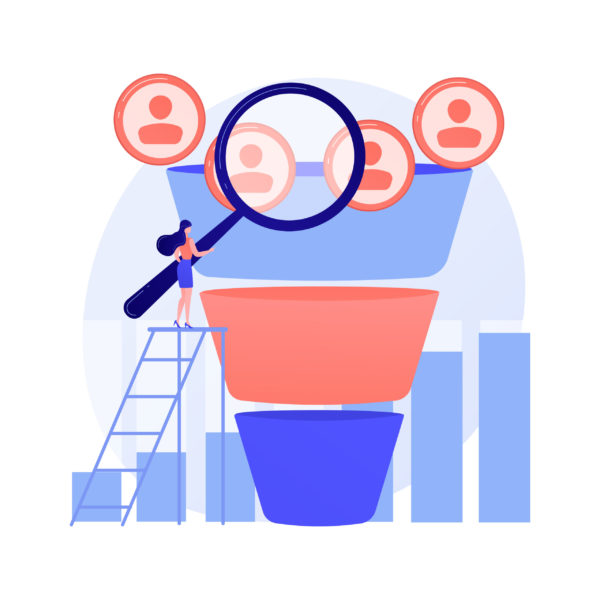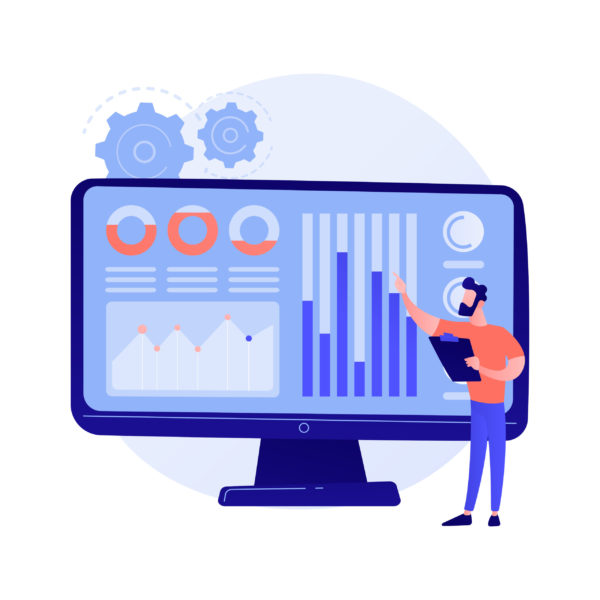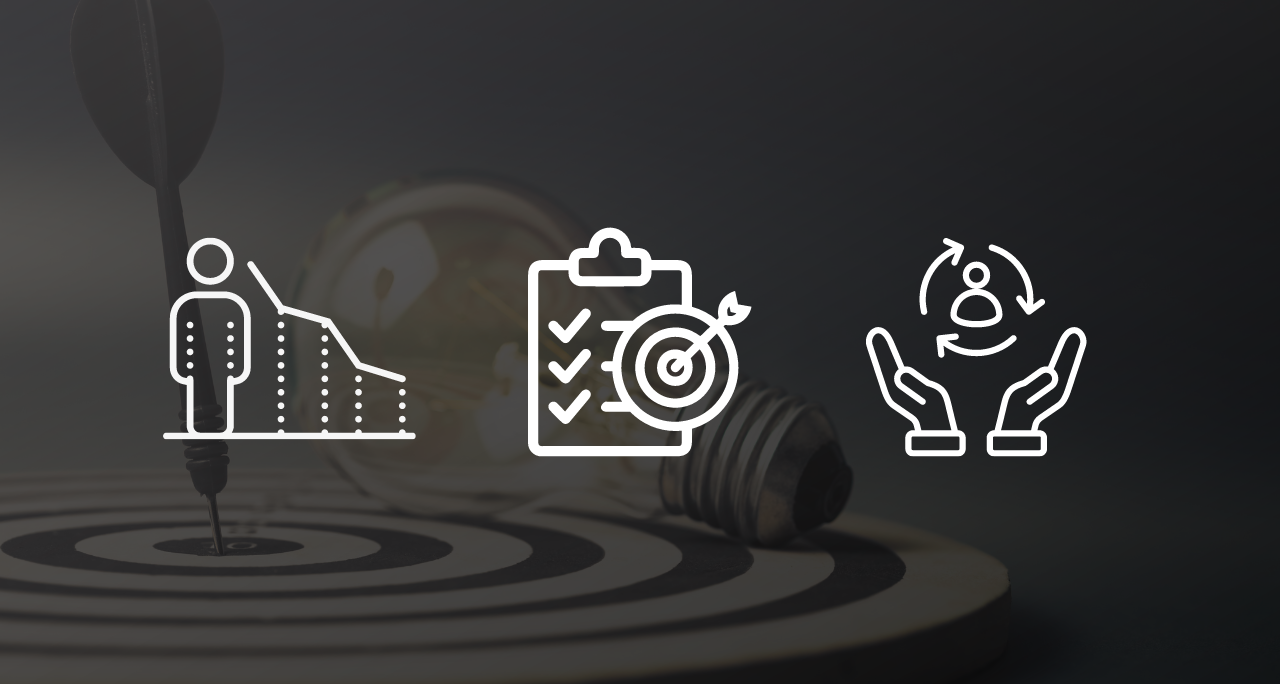For any new SaaS company that offers an appealing product or service, the initial growth can be surprisingly effortless. Your customer base grows, your product is selling well, your users are happy … but then you hit the growth ceiling, where the number of churned customers exceeds the number of acquired customers.
The good news is that by focusing on specific metrics, like your conversion rate, MRR, and churn rate, it’s possible to avoid hitting that growth ceiling or quickly recoup when you do, with no serious impact on your long-term profitability.
Ebook: Here’s our complete guide to the SaaS metrics that matter – what they are, what they mean, and how to find out if you’re doing well with yours.
In order to sustain growth, it’s critical that any SaaS company keep top of mind the following five areas that can lead to hitting that ceiling:
An increase in your voluntary churn rate
Voluntary churn is when a customer decides to cancel their subscription to your SaaS service, and the most common reason is that you’ve lost their attention, trust, and/or satisfaction with your product, price, or customer service.
It’s critical that you investigate possible causes for customer churn and address those areas. Some tactics that might help you deal with voluntary churn include:
- Regularly sharing evidence of the added value of your service or product with your customers, to convince them to stay
- Ensuring that your product or service is easily accessed, whatever the device, with mobile being a top priority
- Sharing news and learning experiences with your customers, via blog posts, eBooks, and webinars.
Inadequate leads/poor acquisition results
For eCommerce and multichannel businesses that are hitting the ceiling, studying the sales funnel by certain metrics is essential. The sales funnel reveals your customer’s journey from initial interaction to purchase and analyzing funnel metrics can help you convert potential leads into customers more quickly.

Reviewing your funnel by the following metrics can help you better understand your customer journey and identify the areas of the funnel where you need to improve:
- Where and when do leads enter the funnel? This is an especially important metric, because it’s the starting line for the rest of your sales funnel. By adding up the number of leads you’ve reached—via email, social media, or other means—by a specific timeframe, you’ll better understand their behavior and what improvements in this area of the funnel can be made.
- What is your conversion rate? This can be defined as the percentage of leads who convert into customers. Following your conversion rate over time will improve your efficiency and, ultimately, help increase your revenue. Conversion rate is easy to calculate, by dividing the total number of conversions by the total number of leads who entered the funnel, and then multiplying by 100 to get a percentage.
- What are your total sales? Naturally, this is the ultimate metric to follow for measuring the overall effectiveness of your sales funnel and tracking your growth over time. If you’re converting customers but your total sales aren’t where you want them to be, you may need to think about ramping up customer acquisition or adjusting your product pricing.
- What’s your AOV? Average order value is measured by finding the average amount spent on individual sales per customer, and it’s important because it helps reveal how valuable each customer in the sales funnel is. If your AOV is low, you may want to expand your target audience and pursue higher-spending customers, or offer incentives like product bundles, cross-sells, or upsells to drive it up.
Not marketing smart
It can be easy for a SaaS business to neglect two figures that are, in fact, critical to their success: Customer Lifetime Value (CLTV) and Cost of Acquisition (CAC) of a customer.
It’s crucial to pinpoint how much value a customer brings to your business over the lifetime of your relationship, and just as important to know how much money you spent to get that customer’s business. The CAC reflects your marketing and sales spend, while the CLTV involves the price of your product, cost of goods, and churn rate.

A very general guideline for business, most agree, is that your CLTV should be 2.5 to 3 times your CAC. A simple way to calculate CLTV: take the average value of a sale x average number of repeat transactions x average retention period for a customer (in years); to calculate CAC: (Sales costs + marketing costs) / Number of new customers acquired through your activities.
If your numbers are not where you want them to be, then it might be time to do a deep dive into your marketing strategies and see where you can cut costs—or spend more to ensure that CLTV and CAC ratio is where you want it to be.
High touch assisted sales and self-service sales both play an important role in this sphere. You need your customers to feel comfortable buying your product or service, to start, and then to feel they have a meaningful long-term relationship with you as committed customers. On the other hand, the self-service model gives you an expanded funnel, and since you don’t need to focus on each potential client individually you can spend your time improving your customer retention strategies or your product messaging to expand your audience.
Not keeping up with market developments
Being nimble and continuously monitoring customer behavior and usage is key to staying ahead of new trends and shifts. Pay attention to the market and listen to your customer’s feedback, and periodically review and update your pricing.
Using analytics tools to gather data is essential for determining if your business is on track or needs adjustments; among the areas to monitor are new conversions, MRR, and churn rate.
Companies that are successful in 2022 and beyond will perfectly understand their target market, their buyer personalities, and the pain points of each. Then, they’ll provide services that relieve those pain points, which helps guarantee churn prevention, increased revenue, and positive word-of-mouth marketing from happy customers.
Not working with a powerful eCommerce partner to sustain your growth plans
Your eCommerce provider should support you with capabilities to tackle multiple, different markets, fight churn (voluntary and involuntary), and better monetize your subscriptions (upsells and upgrades).

A recent blog article in Docmation summed up what any SaaS business should be looking for in an eCommerce partner:
- Out-of-the-box solutions
- Customization
- Testing
- Multiple sales models
- Catalog management
- Cart modifications
- Marketing
- Quick set-up and easy modification
- Customer view and analytics
- Third-party integrations
- Cost and effort efficiency
- Security
Conclusion
Stalled growth is almost inevitable for most SaaS companies, at one time or another. While growth can’t instantaneously be rejuvenated, keeping your metrics continuously in check will reveal what areas need more work and provide perspective on possible reasons for slowing customer acquisition.
With a clear vision of the problems at hand and by working with an eCommerce and subscription management provider with advanced capabilities to help you better monetize, it’s easier to tackle new pricing and marketing strategies and make informed decisions.





